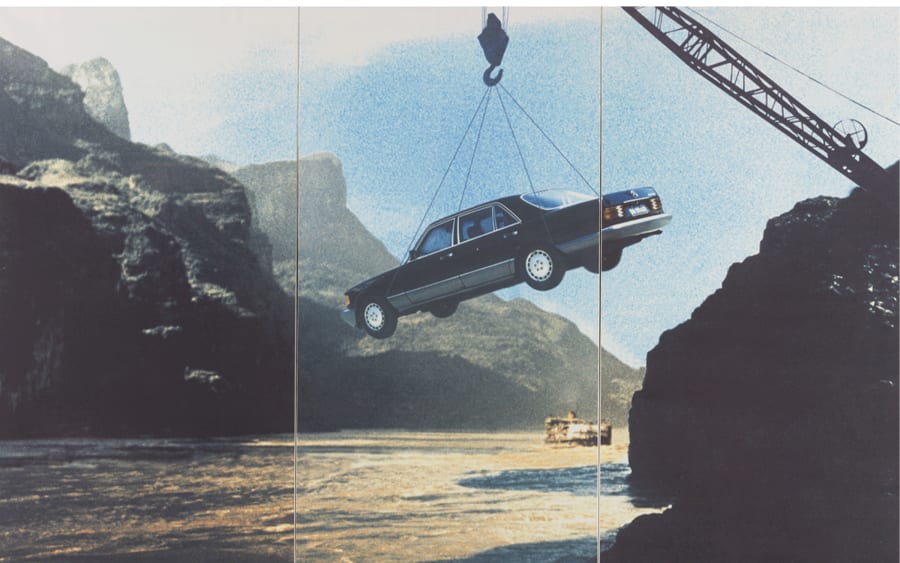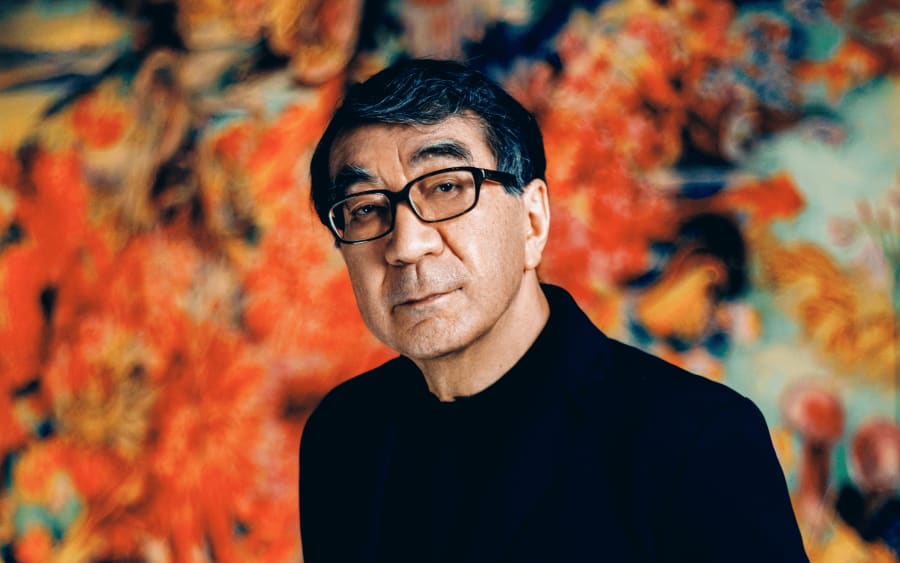‘I always tell people who are interested in collecting that it’s very personal. Artworks are like babies. You have to really love them, not think about future value. You need to spend a lot of time finding out what you like, visiting museums, and getting to know galleries.
‘I started collecting in 2015. Before that I just didn’t have the guts to do it, though I’d been visiting museums in New York since I lived there as a student between 1986 and 1997. The first piece is always hard. I’m in the construction and development business, and initially, I looked at art that would enhance my professional projects. I might place a sculpture in the landscape of a development or a painting in a building lobby.
‘I didn’t decide on pursuing a particular medium, but I found I was buying installation art more than painting for instance. My first contemporary piece was Free (2016) by Doug Aitken, followed by a sculpture by Haegue Yang, The Intermediate – Uninhabited Island in Fiction I (2016). Because of the size of installations, it wasn’t easy to exhibit them in my home and I wanted to see my collection.
‘I founded Winsing Arts Foundation in 2019, and decided to open Winsing Art Place, an art space and bookstore, so I could share contemporary art with the public in a way that would enrich the neighborhood. After staging some exhibitions, I realized that a lot the works are about material and space, and they’re conceptual, but they also nonetheless have visual impact even if you don’t know the meaning behind them.
‘A good example is Philippe Parreno’s Fraught Times, For Eleven Months of the Year it’s an Artwork and in December it’s Christmas (March) (2010–2015). He created 12 Christmas trees for each month of the year and each one looks different. I have the March iteration; I think that’s the prettiest one in the whole collection. It’s a very typical traditional Christmas tree (with snowy branches, baubles, and a gold star). It’s what I think a Christmas tree is supposed to look like, while some of the trees are bare, small, and sad. The work talks about time passing.
‘While I usually show works from the collection, there have been some surprises in the program. Last year, Roni Horn spent a week at Winsing Art Place creating her exhibition, which included significant works by her as well as those in my collection. I got to see how she installed the show over a week and was so impressed with how elegant and beautiful it was. I’m showing Nan Goldin at Winsing Art Place right now. It’s the first time I’ve shown photography rather than installation or painting. I connected with Nan’s work because it represents New York at the end of the 1980s. I know what that time period was about. It relates to my life. The final decision when it comes to collecting, is always how you feel about the work.
‘I don’t really have a mentor as a collector, but I have a lot of friends who I travel with to visit art fairs. The way I now collect art always begins with a fair, because in just 2 days you can see everything and pick out the artists that you like very quickly. Then I’ll do some homework, visit their gallery and solo exhibitions. Once I own a number of artworks, I love to get to know the artists themselves.
‘I do have works that I live with at home as well. I have an apartment in Tokyo opposite Tokyo Tower. I had to get the right kind of work for this context and I’ve installed Neon Forms (after Noh XIII) (2018), a work by Cerith Wyn Evans. Art installed the right way in a house can make life so much more interesting. In my apartment in Taipei, I have A Rebours (2013) by Pierre Huyghe, a sculpture that resembles a fur coat left on the floor.
‘In Taiwan, I spend most of my time working in my office. My habit is to visit museums elsewhere. As a collector though, I care about supporting Taiwanese artists. I really like the work of Chia-En Jao for example, which engages with the history of colonization and the Indigenous people of Taiwan. Through it I’ve learned much about our culture.
‘Contemporary art is less understood in Taiwan. Sotheby’s and Christie’s have outposts here but most people preferred to collect Modern art. It can take courage to go to a contemporary gallery because the work might need some explanation and it can seem difficult. My space is free to visit and you can go as many times as you like. It’s small and people come in while walking in the area. It becomes part of their routine. As both a developer and collector, part of my goal is to change the environment.’
Skye Sherwin is an art writer based in Rochester, UK. She contributes regularly to The Guardian and numerous art publications.
Caption for top image: Jenny Yeh, Founder of Winsing Arts Foundation, CEO, Win Sing Development Co Ltd. Courtesy of the Winsing Arts Foundation © ANPIS FOTO
Published on March 20, 2024.


